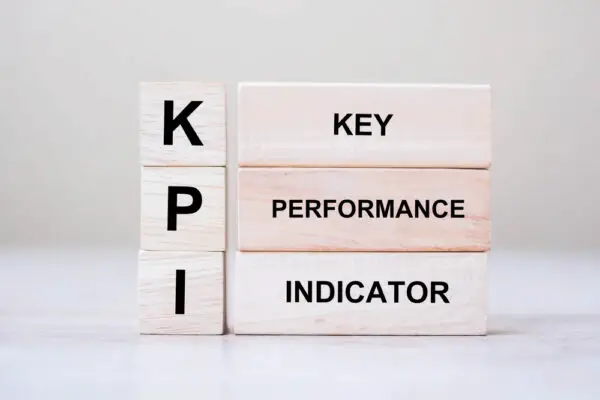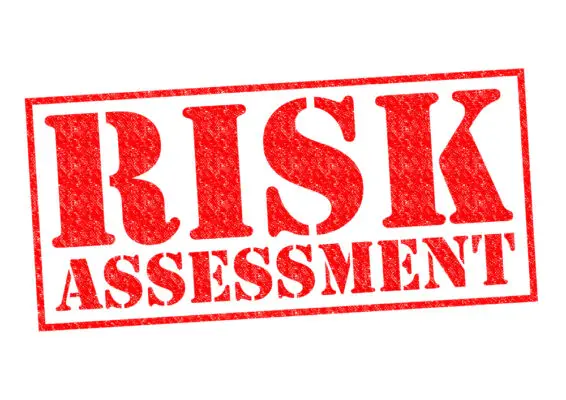Many organizations struggle with how to measure and manage risk properly. One framework that can be used to help manage risk is the Key Risk Indicator (KRI). KRI (meaning) is an early warning system that can help organizations identify and monitor risks.
Using KRIs in an organization’s risk management program has many benefits. Kris can help improve risk identification of significant risks, provide timely information on risks, they can help assess and prioritize risks, and they can improve communication among stakeholders.
Improve Risk Identification
Kris can help improve risk identification by providing a structured approach to measuring and tracking risks. Enterprise risk management framework, through kris organizations, can develop a better understanding of which factors may contribute to the occurrence of a particular risk event. Risk control self-assessment identify risk events. Steps of risk management process.
Timely Information on Risks
Kris can provide timely information on risk exposure because they are typically updated regularly (e.g., monthly or quarterly). This timely information is important because it allows organizations to take action before a risk event occurs.
For example, if an organization identifies a KRI that indicates an increased likelihood of fraud, the organization can take steps to prevent fraud.
Kris can help assess and prioritize risks by providing quantitative data that can be used to compare different risks. This data can be used to prioritize risks based on their potential impact on the organization also emerging risk trends.
For example, if an organization has two risks that are equally likely to occur, but one has the potential to cause more damage than the other, the organization would likely prioritize the higher-impact risk.
Improved Communication Among Stakeholders
Another benefit of using KRIs is that they can improve communication among stakeholders. This improved communication lets all stakeholders know the organization’s risks. The information provides them with what they need to make informed decisions about managing those risks.
These words frequently appear in most information relating primarily to risk management. These words are rarely used to provide information to improve processes or efficiency. Can KRIs be used to mitigate a risky situation, and how can they become effective? That any firm could use for the development of an integrated risk management solution.
A KRI must be maintained periodically to protect against operating risks, reputation and other issues. The review process is designed primarily to help executives report key risks quickly.
All this is possible by analyzing risk, which can facilitate a correct diagnosis, establish appropriate risk indicators and monitor performance consistently using key performance indicators.
Risk management professionals in internal and regulatory audits have experience helping businesses reduce risk. The process for the identification of risks is iterative and dynamic. Auditors must adjust risk assessment procedures as the situation changes:
This blog post will dive deeper into each of these benefits.

KRI (Key Risk Indicator): What is KRI?
Key Risk Indicators (KRI) are a measure of the probability that a combination of events and resulting consequences exceeds the company risk appetite in terms of risks. Key risks indicate key aspects of business risk management.
Operating risk is the loss caused by faulty or inadequate internal processes, systems, or external events. The Operative KRI enables risk management to assess possible losses before the event. The measures provide indicators for changing risk profiles within a company.
In the case of service level agreements, you have a 99.999% Uptime guarantee from the vendors. This translates to an average downtime of only five seconds a month in total. Keeping the promise will have a negative impact on businesses. It is impossible for the company to want it. Examples include AML key risk indicators.
Risk indicators predict undesirable circumstances that could negatively affect businesses. Businesses will be able to quantify risk by creating KRIs. It allows visibility into organizational risk management environments. The number of KRI corporations can have isn’t arbitrary.
Consider the quantity of the identified risks and their nature, the data available to the KRI, and the costs of extracting the information. Understanding KRIs is important in organizations’ everyday operations and is an important consideration.
Importance of KRIs
KRIs are metrics that focus on potential risks and their impact on a business’s success. By regularly monitoring KRIs, companies can stay ahead of potential threats and proactively address them before they cause harm to their operations and bottom line.
In today’s unpredictable business landscape, using KRIs as part of risk management efforts can help a company stay resilient and adaptable. Regular evaluation and review of KRIs can also ensure that resources are being allocated effectively to address the most pressing risks for the organization. Organizations need to understand key risks indicators since its important in getting risk appetite.
Additionally, KRIs are a key part of risk management because they predict possible risk areas, enabling rapid response. KRIs help companies determine risks and emerging trends in their industry. Identify control weaknesses and allow for poor control. Facilitating reporting of risks and escalation. Best key risk indicators includes , operational risk management that increases company value.
What are KRIs and KPIs?
Key Risk Indicator is often confused with Key Performance Indicator (KPI), which are measurement methods used in organizations for monitoring progress toward stated goals.
Both terms are functional opposites. Although the two can be distinct and different on some issues, their creation often leads to the other as complementary. As noted earlier, KRIs offers information about potential business performance risks. These tools serve the early prevention function, detecting key risks and addressing those risks.
Examples of KRIs
KRI can develop people, processes, technologies, facilities and others that impede the company’s operations. KRIs provide other measures of business performance and can cause disruption to the business if they are overestimated. Compliance key risk indicators are some examples of organizational database of key risks.
These indicators can come from internal data, such as employee turnover rates or production output, or external sources, like changes in industry regulations. In the financial sector, KRIs may include credit default rates or changes in interest rates.
In healthcare, important KRIs may include patient satisfaction scores and adherence to safety standards. In every industry, it is important for companies to regularly monitor their KRIs to manage potential risks and maintain operational efficiency proactively.
While each business will have unique KRIs based on specific goals and objectives, some common examples across industries include sales growth rates, project completion timelines, inventory levels, and technology compliance.

What are examples of key risk indicators?
There are several key risk indicators examples, such as some focusing on finance, HR, business operation, technology, or other business areas.
Technological KRIs
A security breach’s failure or unauthorized information access can be an example of the events measured by the KRIS. The KRIs affect the entire industry but may become more important if the company uses the Internet as its sole platform for its business operations. Technological risks may include operational complexity, security challenges and changes in protocol and regulations.
Financial KRIs
Quantitative financial reporting (CRIs) could impact commercial and retail banking institutions, investment banking companies and Chartered Public, Accountants. Some example of KRI could include quantify market risk. Some internal factors could be changes to strategic objectives, budget constraints, or acquisition.
Qualitative KRIs
KRI’s are usually focused on estimating probability-based outcomes for sensitive analysis. In certain business types, quantitative over qualitative KRIs may prove more relevant. Some KRIs can have higher priority status, are of higher priority, and be impacted by internal and external environmental factors.
Operational KRIs
Operational KRI measures could include several things, from internal failure to inadequate internal control systems. KRIs are typically developed across indies. Factors that affect operational KRIs include inefficiencies in operations, leadership or change in strategic goals.
Human Resources KRIs
Staffing companies will likely prefer to use quantitative or qualitative people-based KRIs. Kris primarily involves employees in several areas, including high turnover, staff turnover and employees with lower satisfaction levels.
Steps to develop Key Risk Indicators
Here are the steps for developing KRIs:
First, assess the organization’s most significant risks. This will help determine which specific indicators should be measured. Next, identify possible metrics from existing risk identification methods and gather data related to these metrics. An internal acceptance framework is needed for key business attributes to mitigate risks.
It may also be necessary to create a system for regularly collecting this data in the future and risk responses. Once KRIs have been established, they should be continuously monitored and reviewed to ensure they are still relevant and represent the key risks faced by the organization. Regular communication and discussion of KRIs with stakeholders can also help to ensure they are being used effectively in decision-making processes
Changes in processes and control systems can negatively impact effectiveness, control environment and risks. Do a root cause analysis for a possible hazard predicting probability-based outcomes.
Conclusion
In conclusion, there are many benefits to using KRIs in enterprise risk management programs by risk managers. Kris can improve risk identification, provide timely information on risks, assess and prioritize risks, and improve stakeholders’ communication. When used effectively, KRIs can be a valuable tool for managing risk in organizations of all sizes.

Chris Ekai is a Risk Management expert with over 10 years of experience in the field. He has a Master’s(MSc) degree in Risk Management from University of Portsmouth and is a CPA and Finance professional. He currently works as a Content Manager at Risk Publishing, writing about Enterprise Risk Management, Business Continuity Management and Project Management.

